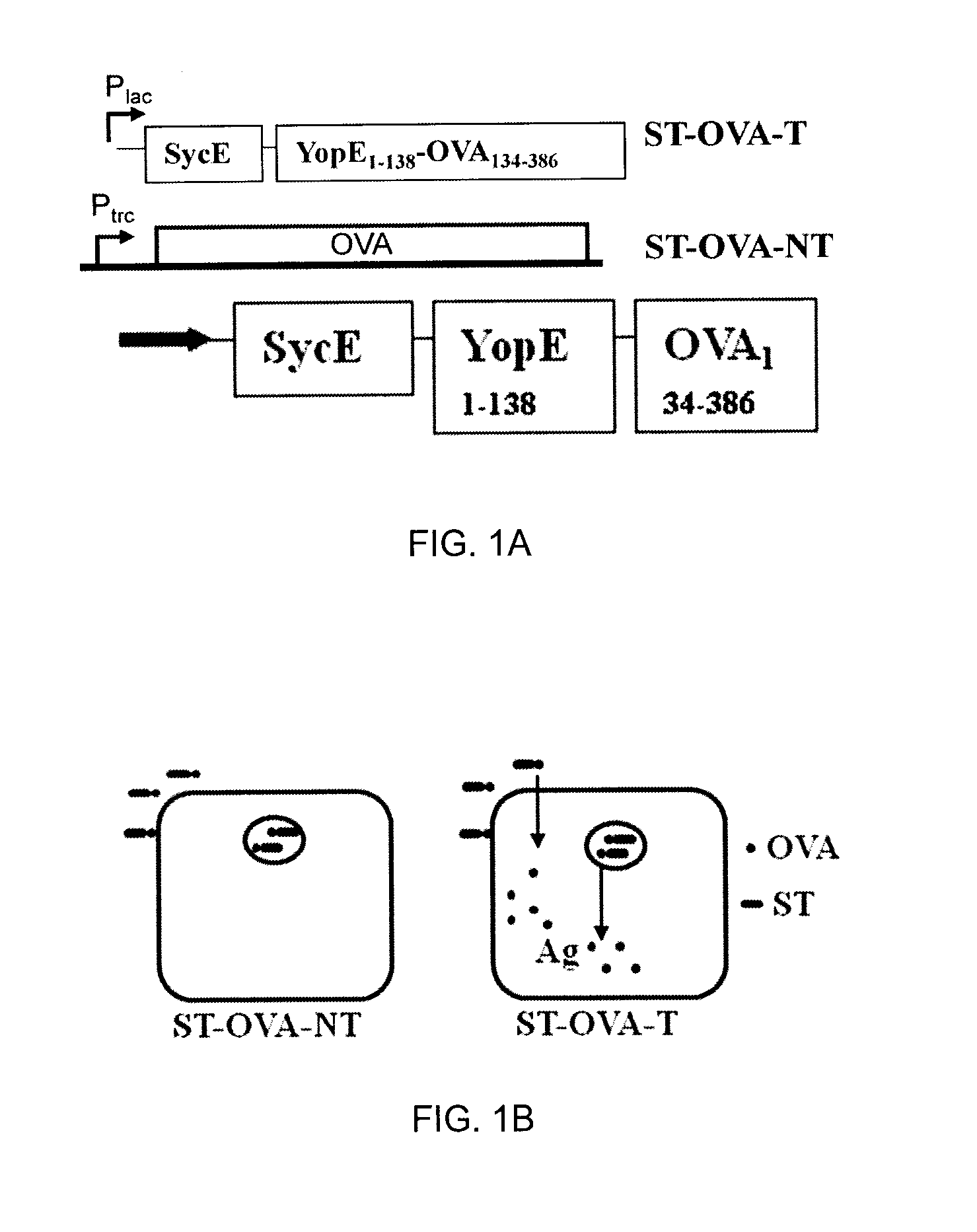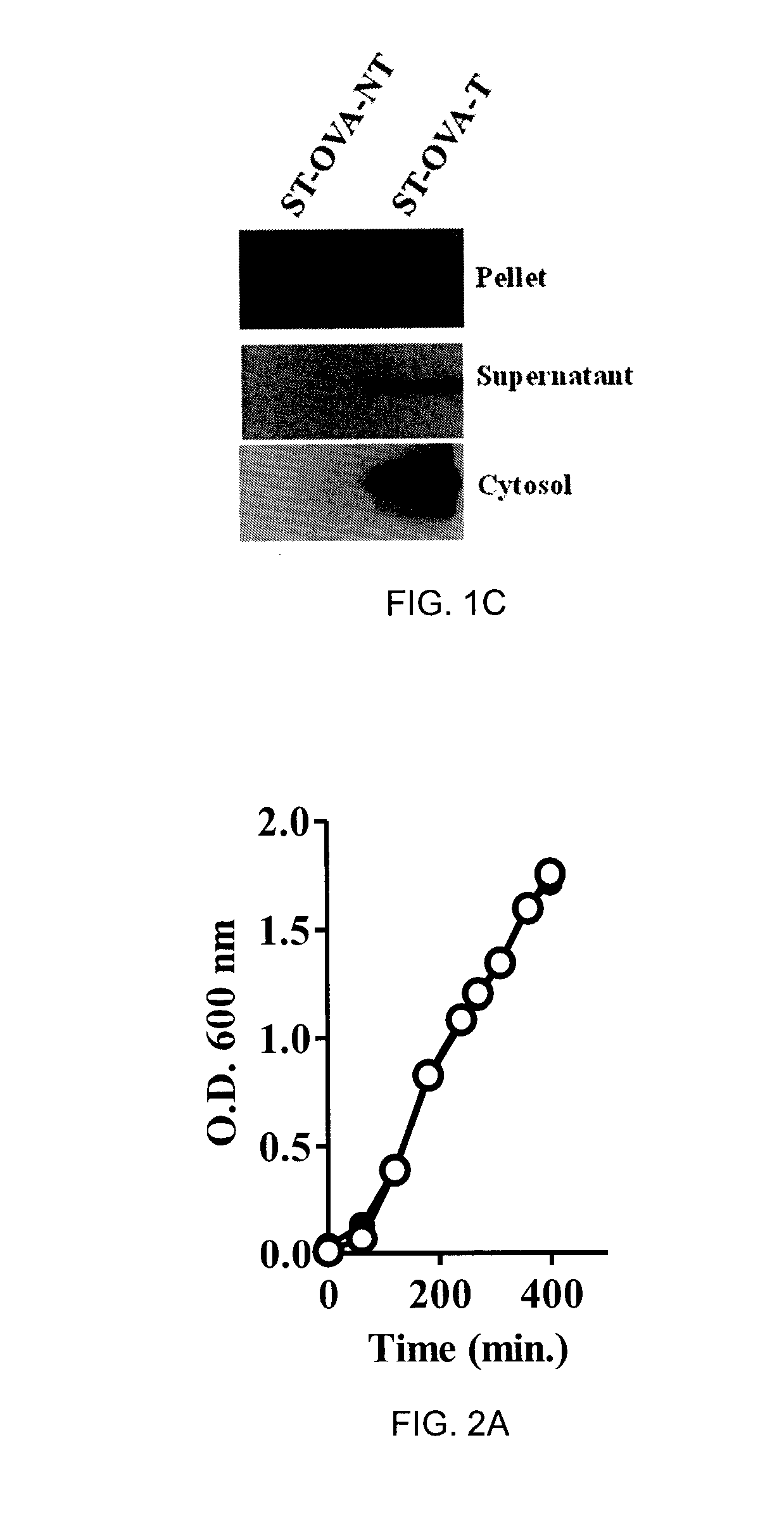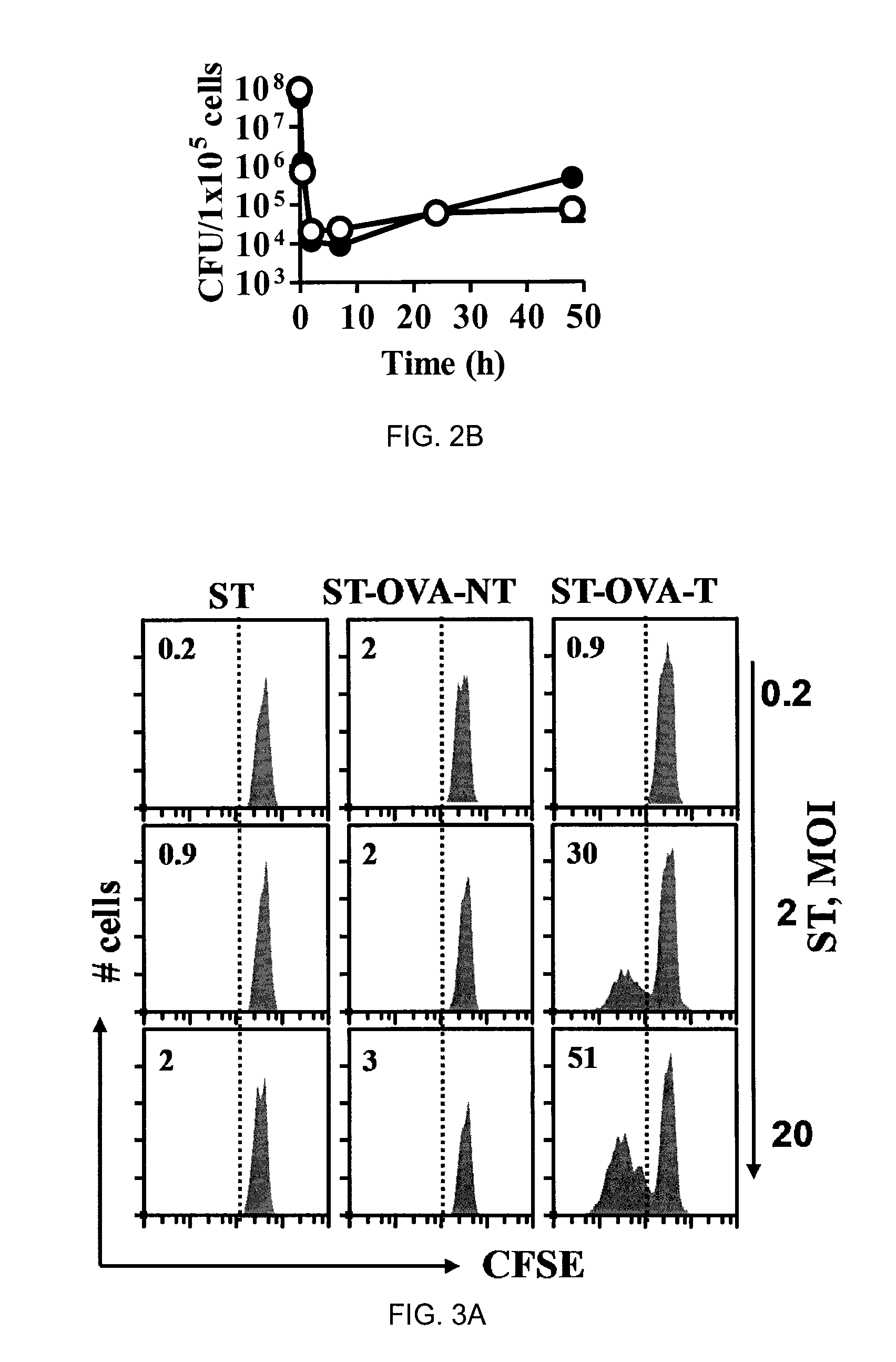Recombinant Bacterium and Uses Thereof
- Summary
- Abstract
- Description
- Claims
- Application Information
AI Technical Summary
Benefits of technology
Problems solved by technology
Method used
Image
Examples
example 1
Preparation of Recombinant Bacteria
[0059]Recombinant bacteria comprising Salmonella enterica, serovar Typhimurium (ST) expressing ovalbumin (OVA) were prepared. Construct ST-OVA-NT, which does not translocate antigen to the cytosol, was prepared as previously described (Luu et al., 2006). A recombinant construct, ST-OVA-T, that produces an OVA fusion protein that is translocated to the cytosol; FIG. 1A shows a schematic of the fusion protein, where OVA is fused to YopE and SycE. YopE is a 23 kDa protein comprising a N-terminal secretion domain (˜11 aa) and a translocation domain (at least 50 aa); the latter domain provides the binding site for the YopE-specific chaperone (SycE) that is required for YopE-mediated translocation of fused proteins to the cytosol (R). SycE is a chaperone necessary for translocation of the fused protein into the cytosol of infected cells through the type III secretion system of ST. A schematic of both ST-OVA-NT and ST-OVA-T constructs and their proposed a...
example 2
Detection of Antigen
[0061]ST-OVA-NT and ST-OVA-T constructs of Example 1 were grown and expression and translocation of ovalbumin was evaluated. Pellet and supernatant of ST-OVA-NT and ST-OVA-T growing in liquid cultures were tested for the presence of OVA.
[0062]C57BL / 6J mice were injected intravenously with 106 ST-OVA-NT or ST-OVA-T reconstituted in 200 microlitres normal saline. Two days later, spleens were obtained from infected mice; spleen cells were isolated and lysed with Triton X-100 in the presence of protease inhibitor, phenylmethylsulfonyl fluoride. The soluble lysate containing cytosolic proteins was tested for OVA expression by western blotting. Samples were normalized for cell number and were loaded on SDS-10% polyacrylamide gels. SDS-PAGE was performed and proteins were transferred to membranes, which were then blocked with 5% skim milk powder in PBS-Tween. OVA expression was detected using a 1 / 10,000 dilution of polyclonal anti-OVA antibody (Sigma-Aldrich), followed ...
example 3
Proliferation of ST-OVA-T and ST-OVA-NT
[0063]The ability of ST-OVA to proliferate extra- and intra-cellularly was also analyzed.
[0064]Liquid cultures of ST-OVA-NT and ST-OVA-T were set up in flasks to enumerate extracellular proliferation. At various time intervals (eg, 60 min., 120 min., 240 min., etc), aliquots were removed for measurement of OD at 600 nm. Both ST-OVA-NT and ST-OVA-T displayed similar proliferation and doubling time (FIG. 2A).
[0065]The influence of antigenic translocation on the ability of ST-OVA to proliferate within the intracellular compartment was evaluated. IC-21 macrophages (H-2b) (5×104 / well) were infected with ST-OVA-NT or ST-OVA-T (MOI=10). After 30 min, cells were washed and cultured in media containing gentamicin (50 pg / ml) to remove extracellular bacteria. After 2 h, cells were washed again and cultured in media containing reduced levels of gentamicin (10 μg / m1). At various time intervals cells were lysed and bacterial burden in the cells determined. N...
PUM
 Login to View More
Login to View More Abstract
Description
Claims
Application Information
 Login to View More
Login to View More - R&D
- Intellectual Property
- Life Sciences
- Materials
- Tech Scout
- Unparalleled Data Quality
- Higher Quality Content
- 60% Fewer Hallucinations
Browse by: Latest US Patents, China's latest patents, Technical Efficacy Thesaurus, Application Domain, Technology Topic, Popular Technical Reports.
© 2025 PatSnap. All rights reserved.Legal|Privacy policy|Modern Slavery Act Transparency Statement|Sitemap|About US| Contact US: help@patsnap.com



